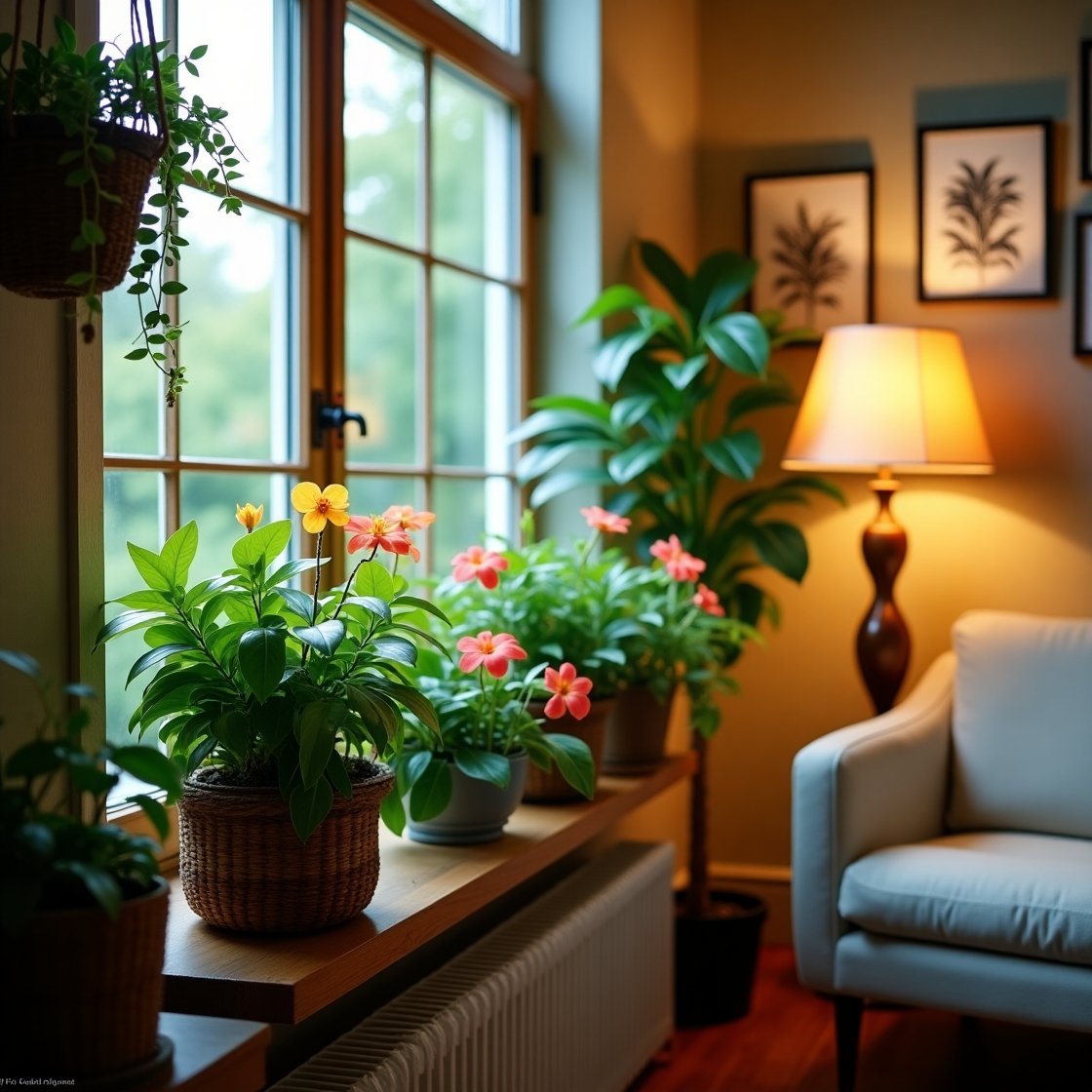Decorative lighting plays a central role in interior design — especially when natural plants are part of the aesthetic. When you combine good lighting with greenery, the result is not just visually pleasing but also beneficial for plant health. The key is understanding how to use natural light to its fullest potential and supplement it with well-placed artificial lighting when necessary.
In this guide, you’ll learn how to evaluate, enhance, and style your home’s lighting to better support both your plant collection and your cozy, natural décor.
Why Natural Light Is Essential for Plants
Natural light is the lifeblood of plants. Through photosynthesis, plants convert light energy into chemical energy to fuel their growth. Different types of plants need different levels of light. For example:
- Low-light plants (e.g., snake plants, ZZ plants) do well in corners or rooms with indirect light.
- Medium-light plants (e.g., pothos, peace lilies) thrive near east or west-facing windows.
- High-light plants (e.g., succulents, fiddle leaf figs) need bright, direct sunlight.
By knowing your plant’s needs, you can decide where to place them and how to arrange lighting that complements their growth and your interior style.
Evaluating Light in Your Home
Before you arrange lighting, take time to analyze the natural light your home receives:
- Direction of Windows: South-facing windows typically receive the most intense light, ideal for sun-loving plants.
- Obstructions: Nearby buildings or trees may reduce the amount of direct light entering.
- Time of Day: Light intensity changes throughout the day. Morning sun (east) is gentler; afternoon sun (west) is stronger.
- Room Function: Some rooms, like bathrooms or hallways, may have very limited light, which affects plant choice and light supplementation.
You can use a light meter or a simple hand shadow test to gauge how strong the light is in different parts of your home.
Positioning Plants for Maximum Natural Light
Once you understand the light conditions in your space, arrange your plants accordingly.
Window Placement Tips:
- Direct Light Plants: Place within 1-2 feet of a south or west-facing window.
- Indirect Light Plants: Place 3-5 feet away or behind a sheer curtain.
- Low Light Plants: Position further away from windows or in shaded rooms.
Use reflective surfaces like mirrors to bounce natural light deeper into the room. This helps plants in darker corners and also enhances the airy, open feeling of your decor.
Using Sheer Curtains and Blinds
Sheer curtains are decorative and practical — they diffuse harsh sunlight while allowing brightness through. This protects delicate plants from burning and softens the overall light in the room.
If you have roller blinds or Roman shades, try opening them halfway to direct light toward plant areas during peak sunlight hours.
Supplementing with Artificial Light
Sometimes, natural light isn’t enough — especially during winter or in north-facing apartments. In these cases, use artificial lighting to simulate sunlight.
Types of Artificial Lights:
- LED Grow Lights: Most efficient and versatile, suitable for all kinds of houseplants.
- Fluorescent Tubes: Great for shelves or kitchen counters.
- Full Spectrum Bulbs: Mimic natural daylight; good for general room lighting that supports plant growth.
You can find stylish options that blend well into your decor, such as LED light strips under floating shelves or pendant lights with grow bulbs.
Duration and Placement:
- Most houseplants need 12-16 hours of light per day.
- Keep artificial lights 6-12 inches above plants, depending on strength.
- Use timers to automate the light cycle for consistency and convenience.
Combining Function and Style
When lighting your plants, consider the aesthetic element:
- Layered Lighting: Mix ambient (ceiling lights), task (table or desk lamps), and accent (wall sconces or spotlights).
- Highlight Focal Plants: Use small spotlights or clamp lights to draw attention to statement greenery.
- Under-cabinet lights: Perfect for small herb gardens in the kitchen.
Choose lighting fixtures in materials that complement your plant pots — like bamboo, brass, or matte black — for a cohesive, stylish look.
Creating a “Glow Zone” with Plants
You can intentionally design plant corners that glow, giving your space a magical touch. Here’s how:
- Add string lights around a group of hanging plants.
- Install a backlit panel or lamp behind a leafy plant to cast shadows on the wall.
- Use uplighting on tall plants to create dramatic, cozy vibes.
These setups make your greenery feel alive and enhance nighttime comfort without overwhelming brightness.
Smart Lighting for Plant Lovers
Smart technology makes it easy to maintain both style and plant health:
- Smart bulbs let you adjust brightness and color temperature.
- Motion sensors can trigger soft light for hallway plant displays.
- App-controlled timers help you simulate a natural day-night cycle.
Many systems also allow you to monitor plant health using sensors that link to mobile apps.
Final Thoughts: Light as Design and Care
Incorporating natural and artificial light thoughtfully can transform your home into a cozy, plant-filled retreat. It’s about balance — enough brightness to keep your plants thriving, and enough softness to create a peaceful, ambient environment.
Use your lighting setup to celebrate your plants. Let them be both the subject and the canvas of your room. Whether you’re designing a minimalist space with clean lines or a lush, bohemian hideaway, good lighting is the foundation that brings your green design to life.
